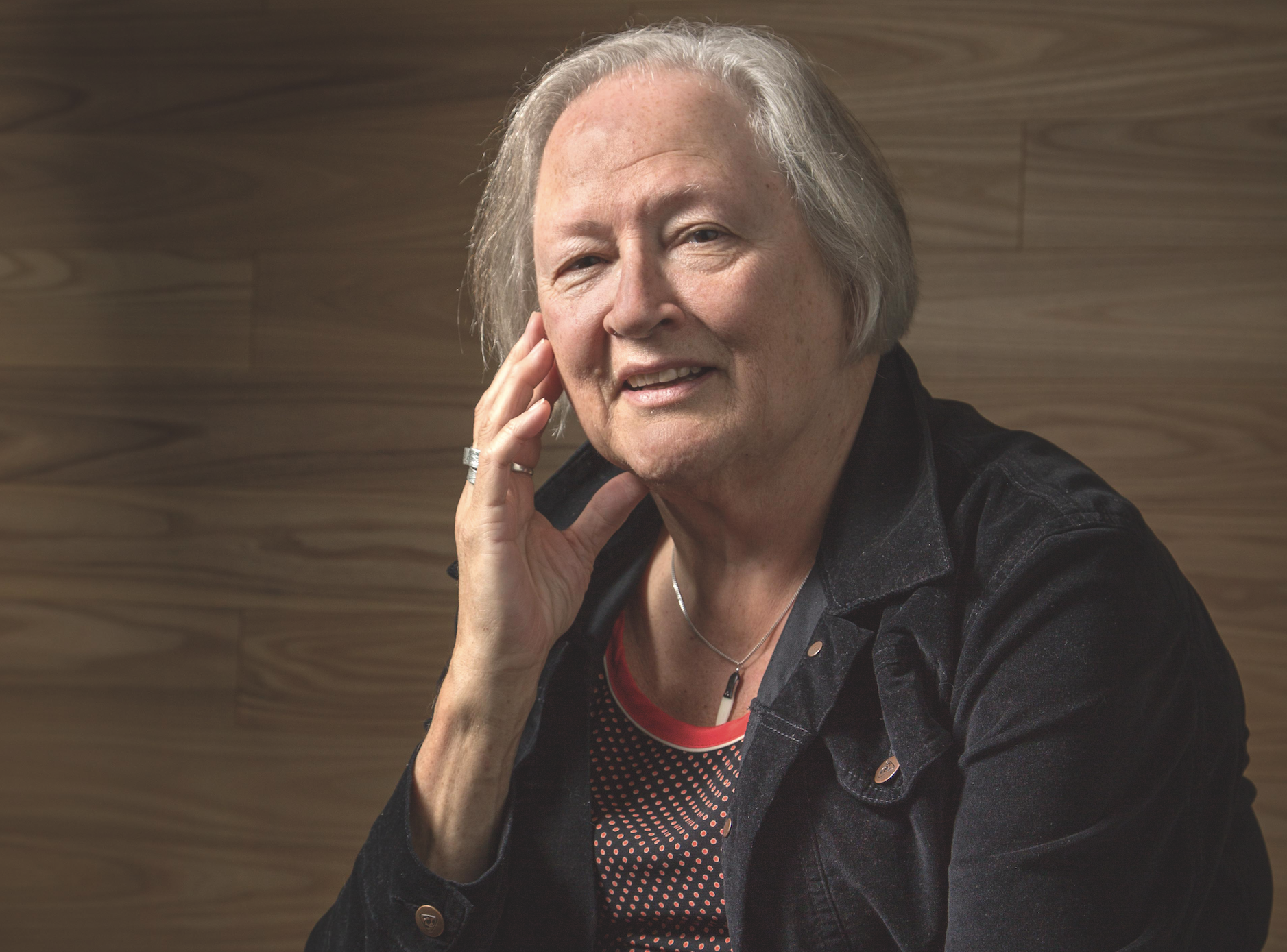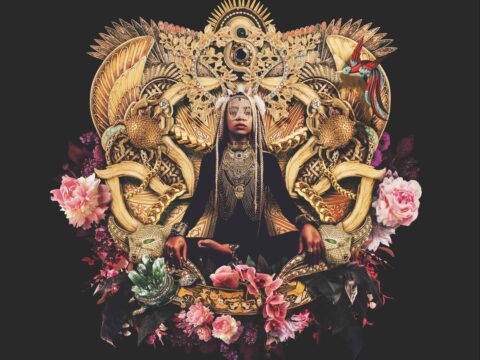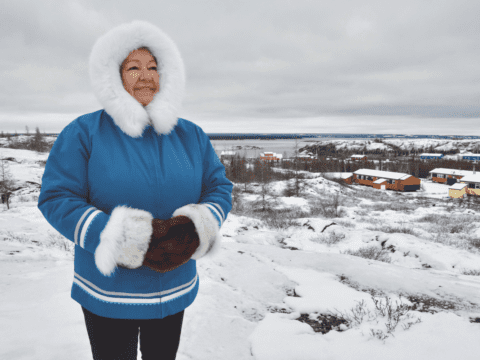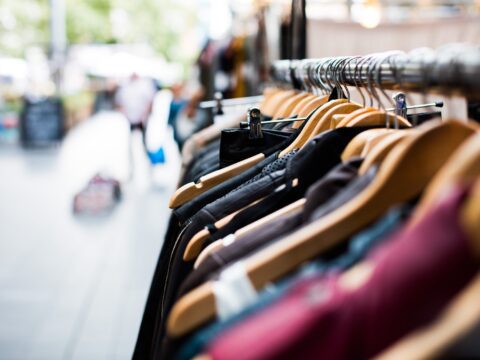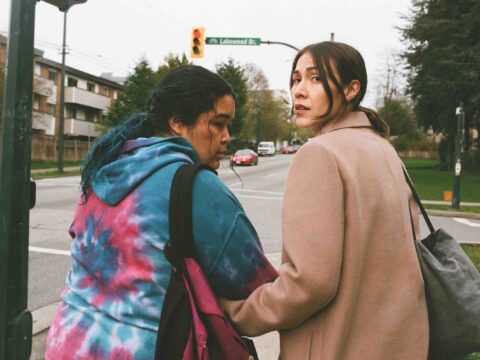Shirley Tagalik is a community educator in Arviat, Nunavut. She helped develop a high school curriculum that is rooted in Inuit traditional knowledge and is passionate about reconnecting youth with their culture, especially around the issue of food security. She is one of the directors of a community organization called the Aqqiumavvik Society that offers programming focused on food security and nutrition, including maintaining a greenhouse and teaching youth to hunt. Originally from Montreal, she married an Inuk man and has several children and grandchildren. Her daughter, Kukik Baker, runs the youth hunting program.
You may unsubscribe from any of our newsletters at any time.
Emma Prestwich: So much of your career has now been spent in Arviat and working on cultural education. Why is Inuit cultural education so important to you as someone who is from another part of Canada?
Shirley Tagalik: Wherever you are, students will do better if they have a strong sense of purpose, identity and hope for their future. Any educator is trying to build that into the relationship with students. And as elders say, it’s all about relationship. It’s really important for our young Inuit to understand their relationship with their environment, with their elders and the generations who have gone before, [and] their relationship with the cultural beliefs and practices that have always ensured that Inuit were strong, successful and survivors. We know that when you cut young people off from that intergenerational relationship, from that understanding of cultural identity, that they don’t do well.
This is one of the reasons why youth suicide is so high in Indigenous communities and there’s tons of research to say that the less youth identify with their cultural strengths, the more difficult it will be for them to experience wellness, to show resiliency, to be able to persevere in the case of difficulties.
EP: Tell me a little bit about what’s happening right now with the Young Hunters program.
ST: The program provides training in Inuit values and beliefs — usually the youth work directly with elders. There’s a whole variety of skills that they’re learning: survival, wayfinding, tool making, on-the-land monitoring, SmartIce technology, and right now, mapping the sea bed. We’re also building technological skills, so it’s not just limited to traditional skills, but anything that will help our youth be successful as they negotiate life today.
Another big component is communication, and how youth can be message carriers back to their community about their culture, beliefs, monitoring activities and how they can contribute to building knowledge, self-reliance and shared understanding about climate change or wellness issues. For example, one of the things that they’re doing is monitoring wildlife. So if they are harvesting caribou and they see a parasite in the animal, we’ll make sure we get all the information about what that parasite is, whether the meat is good to eat, and we turn that into public awareness information.
ST: As an educator, I’ve always tried to make sure that teaching about nutrition and how to prepare food has been a part of everything that I’ve done in the classroom.
In Arviat, we’re completely blessed to live in a place where we always have access to the best food available: caribou meat, fish, seal, whale, geese, ducks — we are in the food basket of Nunavut. So we should not be food insecure. Unfortunately, Inuit are also in dietary transition, and there are foods that have been introduced and have become prevalent in everybody’s diets that had absolutely no place in an Inuit diet before. Metabolically, Inuit aren’t able to process sugars and carbohydrates, and especially processed carbohydrates.
We profiled the nutritional intake for six to 12 year olds and found out that that age group is eating almost no country food. The bulk of their intake comes from sugar drinks and highly processed carbohydrates. Adults may be eating country food themselves, but they’re not feeding it to their children, so that was a big trigger for us. One of the things we said is that we have to target young children and get them to eat country food and understand what a treat it is to have it and how access to it is a blessing that should not be taken for granted.
For Inuit, if you harvest something, you must eat it. If we teach kids to walk out of town, take a slingshot and knock off a ptarmigan, then their mother will have to cook it and they’ll all have to eat it. That’s how we’ll get country foods on the table.
That was the idea behind the Young Hunters program. But then we looked at all these teenagers that are spending all their money on microwaveable hamburgers — we had a huge outbreak of e.coli attributed to microwaveable hamburgers. So we began this “culture of cooking” program that really focused on engaging young people in the fun of cooking. We tried to make sure that we used country food in those projects, and also that we used fresh produce, because Inuit don’t have a history of eating vegetables. That was another reason for starting the greenhouse, since, with climate change, we have a longer growing season.
More on Broadview: New arts centre symbolizes reclamation of Labrador Inuit culture
EP: When it comes to educating young people in Arviat, what is frustrating you at the moment?
ST: I think that the idea of education is not well understood. What happens in school is what people think of as education, and that’s not what a good educator would describe as the limit of education. My oldest daughter, who started the Young Hunters program, when she was in high school, she said, “I hate biology.” And I said, “how can you say you hate biology? You live biology. You go out on the land, you find the fattest caribou, you harvest it, you butcher it, you pack it on your sled, you bring it home, and then you turn it into dry meat. You’re living biology every day.”
She said, “Mom, get real, that isn’t biology. Biology is reading the chapter and answering the 23 questions at the end.”
That, as an educator, broke my heart. How can our kids be growing up thinking that what is important is the 23 questions at the end of the chapter when they have this enormous world of learning right in front of them?
EP: Have you noticed a change in the young people that have participated in these [programs]? Are they more culturally aware?
ST: I would like to say, for sure. They’re more culturally aware and very interested in cultural teaching. When I first came here, I was teaching at the junior high level. The biggest insult they could throw at each other was “Ooh, that’s so Inuk.” I don’t hear that these days, and I think that if somebody said, “Oh, Inuk,” that people would take that as a source of pride. So that, in itself, is a big change, and I think it’s a change that has resulted from the creation of Nunavut, but also from the promotion and revitalization of culture and the pride that young people are taking in cultural knowledge. There’s a big swing in tattooing. We had written a curriculum module for high schools on Inuit beauty, which was all about tattooing, so now the uptick on that is huge.
A shorter version of this interview first appeared in the January/February 2020 issue of Broadview with the title “Shirley Tagalik.”
Broadview is an award-winning progressive Christian magazine, featuring stories about spirituality, justice and ethical living. For more of our content, subscribe to the magazine today.

